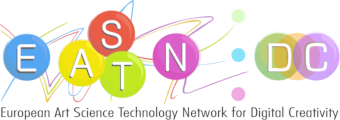It seems completely natural for most people to communicate online by making a video call with a camera located close to their terminal, but this is just one of the possible setups and it might not be the best one. In this article, we suggest that the widespread acceptance and use of metaphors from the physical world into software applications has been neglecting the main advantages of digital media. Since the early 1970s and for the next fifty years, the most popular interactive systems have employed metaphors from the physical world as the main user interface for humans. We analyse the case of the desktop graphical user interface, through the lens of the remediation and the metaphors theories. Our findings have significant implications in the case of teleconferencing systems, which have been employed in learning and remote work. Instead of real-time videoconferencing, we suggest that sparse synchronous collaboration through digital artifacts is a more productive direction for teleconferencing. In particular, further research should examine real-time collaboration with metaphors adopted from multiplayer role-playing tabletop games and videogames.
In the 1970s, a rather small group of individuals in few companies at Silicon Valley discovered that metaphors were an effective way to make computers accessible to novice users. Indeed, user interface designers at Xerox PARC while working with managerial secretaries and publishers of books created the desktop metaphor, which regards a desktop computer as a metaphor for a real desk. In this way, a word processing application operates on files that represent printed pages. Nevertheless, the computer itself has no requirement for a document to represent printed pages. On the other hand, people do have requirements and they prefer new things, such as digital documents, to operate like familiar things, such as printed pages. Unfortunately our collective preference for metaphors are not optimal in the long run when a new tool or medium is significantly different from the old. As a matter of fact, we are currently traped into digital documents that simulate physical paper, without the benefits of neither physical paper, nor digital document. In other words, our preference for simple metaphors has resulted in the worst of both worlds, digital and physical. Even worse is the fact that we remain content, because we do not know any better.
There is nothing wrong with usability or with the human trait to think in metaphors, but it is not beneficial to consider new technological systems only in terms of existing media and behaviors. For example, the popularity of the desktop graphical user interface could be attributed to usability benefits for novice or infrequent users, but this is detrimental to expert performance. Moreover, there might be goverment policies and commercial interests that have facilitated the establishment of particular user interfaces for computers. For example, as soon as an organization requires a certification in Microsoft Office, then the respective skills are considered as part of job specifications and college curricula. Then, any new organization should choose that particular software just because there is an established certification program in place. Therefore, the dominance of particular metaphors might be explained by a vicious circle rather than their suitability for people and tasks. For example, it is comon sense that the workflow of publishing houses, which was the particular use case of the desktop metaphor might not be suitable or even compatible with other organizations. Therefore, we need to examine the nature of computers, as well as the nature of teleconferencing tasks, in order to propose suitable metaphors for the case of distance learning.
Back
“Reflections: Bridges between Technology and Culture, Physical and Virtual”
is supported by:






